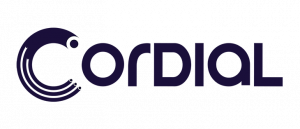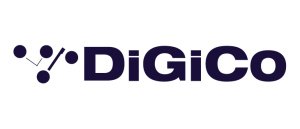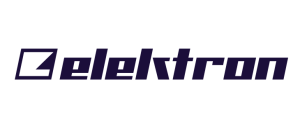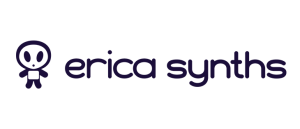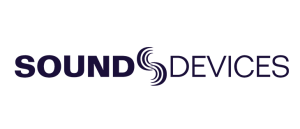The bad boys of Aerosmith are back in the saddle again, pulling out many of their ‘toys from the attic’, literally, for a massive North American tour, which will include classic songs old and new-plus a performance of their 1975 album “Toys in the Attic” in its entirety. As one of the undisputed icons of American rock and roll, the band has racked up an impressive list of chart-topping albums and singles, music/video awards and accolades, and a global die-hard following in their 28-year history. With Tejas trio ZZ Top opening, both Rock & Roll Hall of Famers will hit cities across the nation through mid-September.
The tour sound is entirely in the hands of DiGiCo-from FOH to monitors-with Jim Ebdon on a SD7 for Aerosmith’s FOH and Steven’s in-ear mix handled by Brad Johnson on his own CS-D5 and another D5 in the hands of Tony Luna for the band. Tour production was provided by PRG (Aerosmith).
This was Ebdon’s first outing on the DiGiCo SD7, having previously mixed extensively on a D5 on global tours with Sting, Annie Lennox and Maroon 5. He’s worked on and off with Aerosmith since 2002. “The D5 has served me really well for 6-7 years and I still think it’s a great console, but DiGiCo have taken a huge leap with the design of the SD7. Digital consoles tend to give me ear fatigue after a while, but the SD7 is a pleasure to listen to for long periods. At last, a digital console that’s easy on the ears!”
During rehearsals, he had a few days to get comfortable with the SD7, seeing what the console would do, getting the desk laid out, and was totally blown away. “The band really didn’t rehearse; they only played 5 songs in 3 days and they were songs they hadn’t played for a long time, so I really didn’t get much of a chance to build any snapshots at that time. I actually built all of my snapshots during the first show, which was so easy, and I was able to fine-tune them during the following day with my direct multitrack recording via MADI. Come the second show, I was off and running.”
Using the console’s local stage rack- 56-inputs overall for bass, drums, guitar keys, vocals, acoustic guitar, a dedicated line for Steven’s harmonica, plus a small Pro Tools system for percussion and backing vocal/string tracks-completely minimized his FOH footprint. And with DiGiCo’s new MACH2 software, literally installed a day prior to their first show, Ebdon says the sound and features were, simply put, ‘flawless’. “The console’s processing and flexibility is fantastic. I can’t say enough good things about it. The onboard effects sound really nice and I’m spoiled for choice with plenty to play with. I’ve got an 8 stereo/6 mono aux send setup and I’m using a MacBook Pro with a RME MADIFace for some specific plug-in effects for Steven’s voice, and the only external processing I’m using is a Focusrite ISA 430 and a dbx 160x, which I use on the bass DI. Beyond that, everything else is in the console.”
“I’m a big fan of “less is more” in a live situation,” he adds. “I don’t try to make it anything that it’s not, if you get my drift… It’s easy to over-EQ and to add plug-ins galore, but I mix with my ears and not my eyes. I think with any band I mix, I just try to make everything as natural as possible. Believe it or not, it’s very easy to screw up guitar, bass, drums and piano! I like to get the source sounds right first, then microphone choice, then a good-sounding console and PA system. I’ll then use some reverb and compression to separate and add depth to certain things. The big challenge at that point is to get the vocal on top; I like to hear what the singer is actually singing so it’s important to me to get a good balance of band and vocal. The SD7 is the perfect tool for my job.”
The dynamic EQ and multi-band compression has proven to be quite handy, as well. “I’m using a lot on vocals and it’s brilliant. Steven has a lot of 2k in his voice, especially when he cups the microphone, and I can compress that and single it out, and the vocal has become incredibly smoother. I also use the dynamic compression on bass as well. It’s little things like that that can make so much difference.”
Ebdon also raved about the SD7’s tube emulator. “They are fantastic. For the first couple of shows, I didn’t have a chance to try it on all my inputs, but I went to some obvious ones, like guitar and kick drum, and it worked great. The guitars sound amazing; I’ve not had such a great guitar sound with Aerosmith before. It’s so clear and warm and big. And I’m thinking these tubes are definitely adding to it. And not surprisingly, bloggers are now saying that this is the best Aerosmith have ever sounded. Go figure!”
And that sonic clarity wasn’t lost on the band either, including guitarist Joe Perry. During an interview with Bethlehem, PA’s Morning Call, Perry commented after their first show, “Being a tech freak, [with] the PA, I could hear every word, I could hear every guitar lick, and it sounded like a stereo, except that it sounded like a live band.”
In addition to the MacBook he uses for Tyler’s vocal effects, Ebdon employs a second to multitrack the show using either Pro Tools or Logic Pro for archiving and to provide detailed mixes to the band. Ebdon also records CD’s, which include a Royer SF24 ambient mic straight to CD, and a mix CD, which is the console delayed to a Royer SF24 mic at FOH for a better representation of what’s going on in the house.
For the band’s 65-input monitor setup, Brad Johnson is the lead and handles in-ear mixes specifically for Tyler on his own CS-D5. “With Aerosmith one of the most important factors is the flexibility and implementation of the snapshot feature,” Johnson imparts. “I have over 60 snapshots for a 90-minute show. For my position, I am using every trick in the book, and the D5 has quite a few in its arsenal. I have built a completely customized rig around the exact needs of my client, and because I actually own it, I can guarantee that it will always be exactly the same. Back in the analog, full-frame console days, it would’ve been difficult for an engineer to own and maintain a system this complex. (Also, being a very small fish in the world of audio rental companies, DiGiCo’s support has been outstanding, and was the deciding factor in which digital console I ended up buying.) With my system, I can record and playback multitracks of the show so I can make changes to my snapshots in real time, but not with an actual band on stage (using the RME MADIface). By firing a single snapshot, I can change presets on every external device in my system for a song, a solo or whatever is needed. The D5 sounds overall superior to many other digital consoles I have toured with over the years and is an awesome tool that is limited mostly by the imagination of the engineer.”
Antonio Luna mixes specifically for Joe Perry and the rest of the band on an additional D5 and was familiar with the format having toured with one for the past year with KISS and on tours with the Trans-Siberian Orchestra in 2006 and 2008. “On this particular tour, the band has a file that they have been using for the last few tours, so I’ve come into my current position with the keys to the car, so to speak, but I would’ve asked for a D5 regardless of the circumstances. It’s my favorite console, having used others from Yamaha and Digidesign. On a D5, my mixes come out finished. I don’t need to add a bunch of color to correct things I don’t like. That’s one of the beautiful things about DiGiCo products: the desk sounds the way I think a desk should sound right off the bat. It has an air to it that I find very pleasing. The dynamics are transparent too. I’ll use the gates and comps when needed and I don’t have to worry about how they will affect the color of the mix. I’ve even used the buss output limiters and they sound good as well. I’m old-school when it comes to mixing and subscribe to the ‘less is more’ theory of sound.”
What is an imperative tool for Luna is having two solo bus outputs available, used to monitor in-ear and wedge mixes. “I know of some people have custom switches to do this, but I like things that are simple yet elegant. The 2-bus option on the D5 is the only way to go for me. I want to use less hardware and software to get the job done. It has to be repeatable and bullet-proof. I also like that I can move channels around and arrange the layout of the console.”



